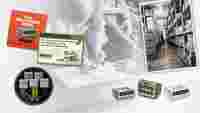The Founding of WAGO
11 March 20241970-1979

The Founding of WAGO
11 March 2024
Spring Pressure Connection Technology Conquers the Markets
A decade of innovations: WAGO’s developments changed the markets in the 1970s. In 1974, the new junction box connectors revolutionized electrical wiring with PUSH WIRE® connection technology for solid conductors. Three years later in 1977, CAGE CLAMP® revolutionized connection technology for all conductor types. WAGO presented the first line of rail-mount terminal blocks with CAGE CLAMP® connection technology and sold the first 30,000 terminal blocks before the actual product launch. Shortly after, CAGE CLAMP® underwent further refinement, spawning the addition of front-entry wiring for versatility in the tightest spaces.
Product Developments and Events from the 1970s
